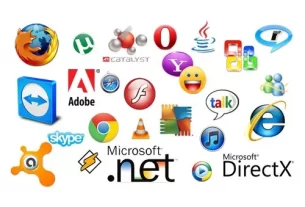
The Different Types of Software in Computer Systems
Software used to operate an operating system is the first program that starts up at the computer’s start-up, doing the most important administrative and accounting work, but also allowing several programs to execute at the same time without disrupting one another.
Compiler language translators (compilers, interpreters) are part of system software, and they translate high-level programming code (such as Java, Python, and C++) into lower-level machine code instructions — 1s and 0s — the CPU is able to process.
Functions
The computer software is the set of programs that function together to create programs and computers. But, on top of that, we get functions that we wouldn’t have been able to access – like, Internet surfing, emailing, spreadsheets, word processing.
You will find two types of computer software; system software and application software. The program which maintains a computer system by interfacing with hardware components; the program that gives specific functionality to the user.
Programs (sometimes also called “programs”) are compilations of instructions for a computer to perform. Without such code loaded onto its hard drive, a computer can’t do anything; different kinds of program do different things; word processors compose documents, for example, and browsers surf the web – each of these solutions solves specific problems in their own way.
Types
There are 3 types of software, system software, utility software, and application software. System software is the glue binds hardware and higher-level application software together; it is what does the “main thing” about computers and how other programs execute on computers.
Operating Systems, Device Drivers, Middleware, and Utility are all software of this type. Language interpreters and compilers transform the high-level natural languages that software authors create into low-level machine code instructions to run.
Word processing, spreadsheet software, media players, video editors and console games are other forms of program. Most of these programs either have a job that the end user performs or they can be made to fit an organization. Their size can be very small or very large depending on features and functions and they are usually loaded into random access memory before being executed by the CPU.
Components
Computer science and software engineering components are repeatable programmer component which provides the specific functionality. Interfaces are what enable component to communicate with components, hardware and other components for a common purpose in common languages. Component testing makes them work correctly together.
There are two basic types of software: system software and application software. System software: programs that control a system’s modules and hardware; translating human-readable language into machine code to be installed on a computer system, and allowing user programs to function successfully on it.
Software for application is software which allows you to perform certain tasks like web surfing, word processing, games, office suites. Operating system (OS) and any system software — the application software must contain an operating system and any necessary system software in order to run, with its performance depending on how much memory (RAM) it has to store data and commands.
Applications
Application software consists of sub-system software that does certain functions for end users in different industries. Software that allows users to perform certain actions — to type or edit documents, to send emails, to write notes or deliver presentations. It can also help with general stuff like playlists or playing video games.
Microsoft Word, Angry Birds, photo editors and web browsers are just some software that is deployed for big analytics functions in businesses such as customer relationship management or enterprise resource management.
Software that’s run all the time when computers or devices are powered up is bootup software, and serves as the basis upon which higher level application software functions. Boot-up software programs in high-level languages that the cpu and other hardware are familiar with, while user apps program in human-friendly languages.








